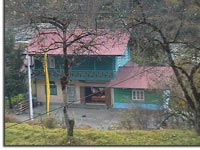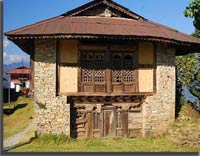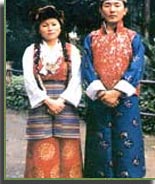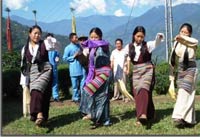History :
Bhutia tribes usally are from Tibetan origin. They migrated to Sikkim in the 16th century. They inhabited the northern part of Sikkim where they are known as the Lachenpas and Lachungpas. Majority of the tribes are concentrated in the dry valley of the north Sikkim. In Sikkim they are called as Denzongpa which is Tibetian name of Sikkim. They are also found in West Bengal mostly in the hilly districts including Darjeeling and Kalimpong. Bhutias forms 14% of the total population of Sikkim.

The ruling dynasty in Sikkim before the mid 1970s annexation by India was a Bhutia and was from the Namgyal dynasty. Bhotey is often used as a refering term, used by people of Nepali heritage to describe people of Tibetan heritage, titlehough most Bhutias are better off economically and educationally among the various Himalayan communities including the Nepalese.
Place /Location (then and now) |
Sikkim , West Bengal |
Population |
14% of Sikkim Population |
Languages spoken |
Sikkimese, Bhutia, Hindi, Lechpa , English |
Food |
Rice, meat, Beef |
Culture

It ensures law and order and is responsible for conservation of practises such as grazing, cultivation programs and the seasonal development of the community. Agriculture is the main source of occupation among the Bhutias. Bhutias usually practice intermarriage within their clans and follow hierarchical system of bride and groom selection. Clan discrimination is widespread and marriage outside the community is looked down upon. During Bhutia Tribes marriage, a representative from the male's house arrives at the female's home with gifts and raises the offer of marriage.They follow Tibetan Buddhism of which the Nyingma School is the oldest followed by Kagyu, Sakya and Gelug.
People

They also wear a woollen cloth called Pandgen in the front part. The garment is designed with colourful geometric lines which is usually worn by wedded women. A cotton or silk belt is tied on the waist.
Famous personalitis of the Bhutia tribe are Bollywood star Danny Denzongpa and Indian football (soccer) captain Baichung Bhutia.
Food
Food of Bhutia Tribe is preferably rice with animal fat. They are common beef eaters. Their traditional and favorite dishes are Momos, Gya Thuk, Ningro with Churpi, Sidra Ko Achar, Saelroti, Shimi Ko Achar, Pakku, Kodo Ko Roti, Phapar Ko Roti, Silam Ko Achar, Phulaurah Gundruk, Phagshapa, Sael Roti. Bhutias are fond of Chaang (the millet bear), it is served in the special bamboo container called Tongba with the hollow pipe made of Bamboo. Tea with milk and sugar, and butter tea is also served in religious or social occasions.
Languages
The Bhutia Tribes speak in Sikkimese Language. The language is similar to some of the foreign languages. Even Nepali is spoken by wide population of Bhutia Tribe. Apart from these the Bhutias Speak Hindi, Bhutia, Lepcha and English.
Occupation
The occupation of Bhutia Tribe is usually farming, producing vegetables and fruits. They have even developed expertise in weaving. Woolen clothes, shawls are popular in the markets of Sikkim and West Bengal. Another major occupation of this tribe is breeding yaks and sheep.
Festivals

It is the most important festival among the Bhutia tribes in India. During this festival Chaan dancings and merrymaking at the monasteries at Palace (Tsuklakhang), Phondong and Rumtek are enjoyed by the tribe. The main attraction of the festival is Archery Competition. They give offerings to the God and the tribes exchange feasts among each other. Stage fights and passing through the crowds with the fire torches add more adventure and excitement to the festival.


